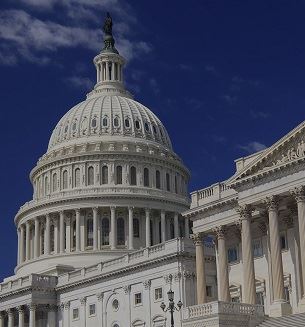Federal Crime Lawyer: Defending Your Rights Against Serious Federal Charges
Federal Crime Lawyer: Defending Your Rights Against Serious Federal Charges
Blog Article
Demystifying the Refine of Federal Appeals: What You Required to Know
Browsing the intricate realm of federal charms can often feel like going across undiscovered waters for those unfamiliar with the process. Comprehending the nuances of appellate court territory, the details of submitting a notification of appeal, presenting a compelling brief, and making a convincing oral debate are essential parts that can significantly impact the outcome of a situation. By unwinding the layers of complexity surrounding federal charms, individuals can acquire a more clear insight into the mechanisms that govern this vital stage of the legal system.
Understanding Federal Appeals Process
Exploring the detailed world of the government charms procedure introduces a organized and systematic journey through the judicial system. Federal allures work as a critical device for examining choices made by lower courts. Understanding this process is essential for any individual entailed in lawful process at the federal level.
The procedure commonly starts with a celebration dissatisfied with a reduced court's ruling submitting a notification of charm. This triggers a testimonial by a greater court, where a panel of judges assesses the lawful disagreements presented by both events. Briefs describing the legal thinking behind each event's placement are submitted, and dental disagreements may be heard to make clear complicated issues.
The appellate court's decision is based on a comprehensive evaluation of the lower court's proceedings and the debates offered. As soon as the appellate court gets to a decision, it can attest, turn around, remand, or customize the lower court's ruling, providing quality and finality to the lawful conflict.
Appellate Court Jurisdiction Explained
As we progress from recognizing the government charms process to studying the details of appellate court territory, an essential aspect emerges relating to the authority and limitations of these higher courts in the lawful landscape. Appellate court jurisdiction refers to the extent of situations that a particular appellate court has the power to choose and evaluate upon. Unlike high court that listen to situations for the first time, appellate courts are restricted to evaluating choices made by reduced courts. These decisions can consist of judgments from both state and federal courts.
Appellate courts have territory over particular sorts of cases, typically those including lawful errors, step-by-step issues, or concerns of law instead than valid conflicts. The territory of appellate courts is generally outlined in laws and regulations that govern the court system. Recognizing appellate court jurisdiction is important for events associated with the charms procedure as it identifies whether a situation is qualified for review and the degree to which the appellate court can interfere in the lower court's decision.
Declaring a Notification of Appeal
The preliminary action in commencing the federal charms procedure entails submitting a Notice of Appeal with the suitable appellate court. This critical document formally informs the court and the various other events entailed in the case that the appealing party intends to seek an evaluation of the reduced court's choice. Submitting a Notification of Allure is a rigorous procedural demand that establishes the appellate procedure in activity.
When preparing the Notification of Allure, it is vital to ensure compliance with the particular guidelines and guidelines of the appropriate appellate court. federal crime lawyer. The record has to generally include information such as the case name, the lower court's name, the day of the judgment being appealed, and a succinct declaration suggesting the premises for the charm

Rundown and Dental Argument
In the appellate procedure, presenting created briefs and participating in dental disagreements play pivotal functions in supporting for the appealing party's placement before the appellate court. Briefs are detailed legal files that lay out the parties' debates, legal authorities, and analysis sustaining their positions. These created submissions supply the court with a detailed understanding of the truths of the instance, the relevant legislation, and why the appealing event thinks the lower court's decision need to be overturned.
Complying with the entry and testimonial of the briefs, oral arguments offer the parties a chance to further clarify their placements, resolve any kind of questions the appellate judges might have, and emphasize bottom lines from their written briefs. Oral arguments are an opportunity for the attorneys to persuade the courts via verbal campaigning for and actions to queries from the bench.
Both the composed briefs and dental debates are vital elements of the appellate process, allowing celebrations to present their situation completely and compellingly before the appellate court. - federal appeal attorneys
Receiving the Appellate Court Choice
Upon conclusion of dental disagreements and submission of written briefs, the following essential stage in the appellate process includes awaiting the crucial judgment from the appellate court. This duration of expectancy can be loaded with a mix of stress and anxiety and wish for celebrations associated with the appeal. The appellate court's choice is commonly supplied in a created layout and details the court's final thoughts on the legal concerns presented, the thinking behind their decision, and the judgment rendered. The moment framework for receiving the appellate court's decision can vary, however courts aim to give timely resolutions. When the decision is released, parties must thoroughly review the court's judgment to comprehend the result and identify any further actions that may be essential. Whether the appellate court verifies, reverses, or remands the reduced court's decision, recognizing the ramifications of the ruling is essential for all parties entailed in the appellate procedure. Immediately evaluating and comprehending the appellate court's decision is crucial in browsing the following actions in the legal procedures.
Final Thought
Recognizing the appellate court territory, filing a notice of charm, preparing briefs, and providing oral disagreements are all vital components of this procedure. Eventually, getting the appellate court choice can give quality and resolution to lawful conflicts.
As we progress from recognizing the federal allures process to exploring the ins and outs of appellate court territory, an essential aspect comes to light concerning the authority and restrictions of these greater courts in the lawful landscape. Appellate court jurisdiction refers to the extent of instances that a particular appellate court has the power to decide and assess upon. Unlike trial courts that hear situations for the very first time, appellate courts are limited to evaluating choices made by lower courts. Recognizing appellate court territory is vital for celebrations entailed in the allures process as it figures out whether an instance is eligible for testimonial and the level to which the appellate court can interfere in the lower court's choice.

Report this page